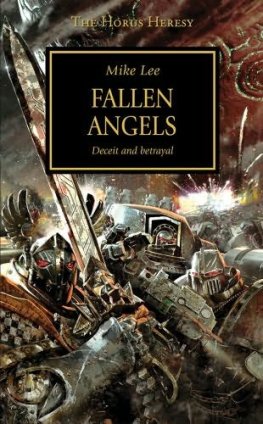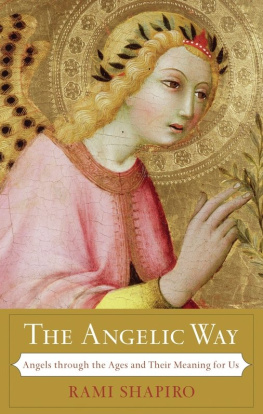
This book is dedicated to the People of Kurdistan, Keepers of the Cradle of Civilization

May you eventually find the peace and independence you so sorely deserve
FROM THE ASHES OF ANGELS
Do angels and fallen angels exist outside the realms of myth? What were their true origins, and what impact might they have had on the rise of civilization? Andrew Collins reveals disturbing new evidence to show that:
- angels, demons and fallen angels were flesh and blood human beings responsible for the foundations of Western civilization
- Eden, Heaven and Paradise were once earthly realms placed amid the mountains of Kurdistan
- these human angels, known in ancient Judaic texts as Watchers and Nephilim, came originally from Egypt and were responsible for the construction of the Great Sphinx and other cyclopean monuments
- both Egypt's high civilization and the Watchers of Kurdistan have left as a legacy to humanity a chilling warning that the world ignores at its peril
Acknowledgements
First I would like to thank Debbie Benstead, for her five years of inspiration and guidance. Our world together did not survive this book, but nothing is ever forgotten. Thanks also go out to David Southwell, for providing me with his enthusiastic intuition and extraordinary insights into the Watchers' lost history, as well as for offering editorial comments on chapters; to John Day, who encountered the Watchers as early as 1974 and set me on the path; to Bernard, without whom I would never have believed such a forgotten race had ever inhabited this world; to the staff at Leigh Library, for their continued help and support, and for securing books and papers that seemed at first to be a near impossible task; to Professor Philip Alexander, for his help and advice on Judaeo-Christian angelology; to Rodney Hale, for his vital astronomical calculations and for his valued support; to Gareth Medway, for continuing to find obscure references on any subject I put to him; to Steve Wilson, Caroline Wise, Johnny Merron, John and Kerry Horrigan, Jason Digby, Lisa and Karl 'Shem' Dawkins, for their constant friendship and for reading the manuscript in its later stages; and to Richard Ward for his exhaustive research into the Watcher tradition, and for the weekly 'Morphochats' that helped to establish this book.
Thanks also go out to Storm Constantine, for her deep friendship, her constant support, and for her valued editorial comments on the construction of From the Ashes of Angels; to Luigi Bonomi and Susan Watt of Michael Joseph, for taking the risk; Simon Trewin of Sheil Land Associates, for his faith in me as a writer; Billie Walker-John for her wonderful illustrations and dedication; Peter Ford for correcting my colloquialisms; Niven Sinclair for his never-ending support; Moira for her constant friendship; Graham Hancock, for setting the scene with his own essential books, and for his invaluable advice, opinions and support; Lynn and Carl McCoy of Sheer Faith for their advice and offer of help on the book jacket; and to Fields of the Nephilim/Nefilim, whose dark, brooding music has helped to resurrect the spirit of the Watchers and has been a constant inspiration during the writing of this book. Lastly, I would like to thank Ennio Morricone for making the music that kept me strong during these troubled times.
Illustration Credits
The publishers wish to thank the following for permission to reproduce copyright material:
the Hebrew University, Jerusalem, for 'James Biberkraut working on the Dead Sea Scroll known as the Genesis Apocryphon', fromAGenesis Apocryphon by Nahman Avigad and Yigael Yadin (Hebrew University Press, 1956); the Kunsthistorisches Museum, Vienna, for Hugo van der Goes:Sndenfall (GG 5822 A), from Hebrew Myths: The Book of Genesis, by R. Graves and R. Patai (Cassell, 1964); the British Library (Ref: OR 8761 Folio 52V) for a painting fromPersian Myths by Vesta Sarkhosh Curtis (British Museum Press, 1993); the Runion des musees nationaux for the victory stela of Naram-Sim, in the Musee du Louvre, Paris; the Mithraic lion-head deity (CIMRM 545) printed by kind permission of Kluwer Academic Publishers, Dordrecht, The Netherlands, and M. J. Vermaseren; Mrs B. Walker-John for her drawing and painting of a 'Watcher'.
Every effort has been made to trace and contact all copyright holders. The publishers will be glad to rectify any omissions at the earliest opportunity.
List of Figures
8. and 9.
List of Charts
List of Maps
Author's Note
Unless otherwise stated, all historical dates in this book have been taken from H. E. L. Mellersh, Chronology of the Ancient World 10,000 BC to AD 799, Helicon, Oxford, 1976. All biblical quotations, unless otherwise stated, are taken from the Revised Version of the Authorized (King James) Bible of 1884. Any interpolations by the author within quoted texts are printed in italic within square brackets (or in roman within square brackets in longer italic extracts), to distinguish them from interpolations existing in the originals.
One
I HAVE BEGOTTEN A STRANGE SON
And after some days my son, Methuselah, took a wife for his son Lamech, and she became pregnant by him and bore him a son. And his body was white as snow and red as a rose; the hair of his head as white as wool and his demdema ('long curly hair'
These words form the opening lines to what must be one of the most astonishing yet chilling fragments of religious text ever written. They are the assertions of the antediluvian patriarch Enoch as he describes the sheer distress and horror that accompanied the miraculous birth of a son to his grandson, Lamech. The passage is taken from the Book of Noah, an ancient script of Hebrew origin appended to the more famous Book of Enoch, a pseudepigraphal (i.e. falsely attributed) work, considered by scholars to have been put together in stages during the first half of the second century BC.
The predicament conveyed by these revealing lines seems manifestly clear: Lamech has recently taken the hand of a woman who has given birth to a child that bears no resemblance whatsoever to its immediate family. His appearance is entirely unlike other 'human beings', for his skin is white and ruddy, his long curly hair is white and 'beautiful', while his eyes mysteriously enable the whole house to 'glow like the sun'. From this specific appearance Lamech can only conclude that his wife has been unfaithful, since the infant resembles 'the children of the angels' who are 'not like us'.
This seems an extraordinary conclusion on the part of Lamech, and a very strange subject for a religious scribe to invent without good reason. If it can, for a moment, be accepted that this account records an actual event in the history of human kind, then it implies that the strange appearance of this child matched the offspring of angels, and must by inference have been the product of the union between a mortal woman and a divine 'messenger', a 'heavenly intelligence' in the service of God himself.
Surely this is impossible, for according to Judaeo-Christian tradition angels are incorporeal, having neither form nor substance. They are certainly unable to reproduce by immaculate conception. If this is correct, then the story of the birth of Lamech's strange son is in direct contradiction to the rabbinical teachings of Judaism and the creed of the Christian faith. Yet here it is, in print for all to see heretical words implying that angelic beings were able to produce children by cohabiting with mortal women.
Next page















